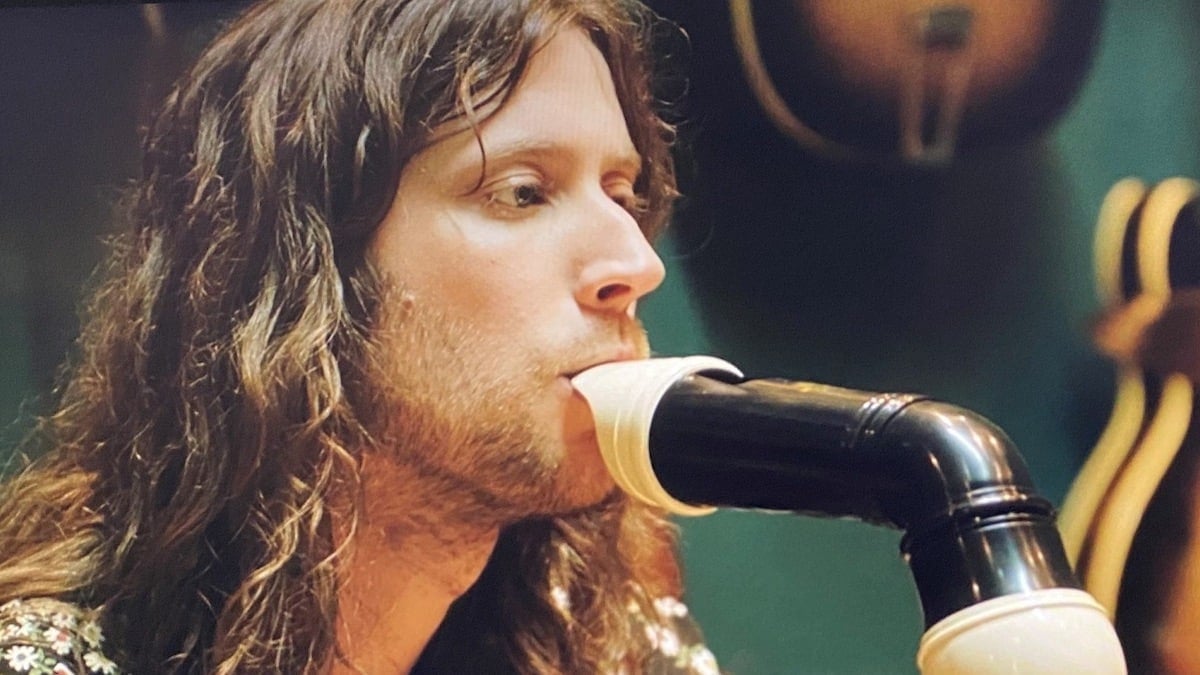
Disney Gallery’s Episode 7 explores the score of The Mandalorian, a fascinating journey into a mix of traditional instruments as well as guttural industrial noises and 80s synth. Sometimes, the score is nothing more than a deep buzz.
A film or television score is the type of thing that an audience doesn’t pay attention to unless it’s very good or very bad, and the musical mix of The Mandalorian underpins wise choices in characterization and theming.
When re-watching Chapter 1 of The Mandalorian to work on this piece, I expected the screen to fade from the Lucasfilm logo to black, with the melancholy opening themes of the series’ base theme serving as the audio. But I’d forgotten that there is an entire mini-scene before viewers hear a note- the music only begins when Mando himself appears.
As Mando is introduced, he’s accompanied an echoing series of low tones evocative of the American Indian tribal music of the West.
The musical intensity was such that I’d mentally shifted it before any action took place at all. In about eight notes, it was clear who this guy was and where we were, no matter the planet.
Meet Ludwig Goransson
This is the stunning work of composer Ludwig Goransson, who had the absolutely impossible job of following iconic Star Wars composer John Williams.
And how does a musician follow John Williams? He doesn’t try to be John Williams.
Goransson managed to find a way to walk a dreadful tightrope, stretched as it was between fan expectations of Star Wars music and the need for a fresh, distinct sound.
The instrument which creates those initial tones of the opening theme is not, as I initially assumed, an electronically modified clarinet. It’s a recorder.
Goransson began his task of scoring the show by ordering a kit of recorders and immediately picking up an enormous model which couldn’t be further from the screechy, plastic nightmare your third grader brought home for an entire semester. Then he closed the door of his studio.
“I closed myself off for like a month with just instruments, no computers,” Goransson says. “You don’t get anything back from a computer. You’re sitting with a guitar, it’s giving you something.”
What resulted was a show which is entirely rewatchable from purely a musical perspective.
The initial tones of the main theme are simultaneously dreamy and earthy, but before the viewer can sink into an assumption that this is a calming meditation session, Goransson builds the score’s tension and Western evocations by layering in drums, guitar, and heavy undertones before a fuller orchestral sound with brass and violins join in.
The drums begin to sound less menacing and more like a heartbeat, and the theme fades out with a twinkling, lullaby-like instrumentation that is all Baby Yoda and starglow.
For incidental music within the episodes, Goransson also relied on brass instruments, a 70s synthesizer, and industrial sounds that were so processed they at first sound like special effects rather than part of the score.
‘It’s about humanity’
Goransson realized that one way to “honor Star Wars” was through “putting organic instrument sounds through machines.” When it needs to be, however, the score is also more traditional and symphonic.
Using both techniques helped Goransson meet the challenge of telling the story of one character whose face is almost never seen. In some ways, the score picks up the emotional slack of Mando’s missing facial expressions.
Footage of the recording sessions with the full orchestra preserves the moment in which anyone outside of the showrunners caught a glimpse of what was to come in The Mandalorian. Images of producer-director Dave Filoni doodling a sweeping image of Mando on sheet music as Goransson’s pregnant wife acts as concertmaster create a sense of expectation and hominess.
“Really, it’s about humanity,” show creator Jon Favreau tells the musicians. He later pointed out that while Star Wars fans have vastly different opinions about the movies, plotlines, and characters, they are all in agreement about the perfection of Williams’ music.
“You needed to be the person who wasn’t afraid to just march out there,” Faveau told Goransson. Footage of Favreau holding up his cell phone on The Mandalorian’s set so the cast can hear a sample of the theme song confirms what we now know: he had chosen the right man for the job. Even through a tinny cell phone speaker, the loneliness, determination, and traumatic childhood of Mando are musically established in just a few notes.
The series’ episodic character is also reflected in the score. Goransson realized that each chapter required different music, and settled into the challenge, noting that the job was “almost like scoring three feature films.”
The segments have straightforward names such as “You Are a Mandalorian” as well as some tongue-in-cheek titles like “HammerTime,” a thudding track which scores the Armorer creating part of Mando’s suit.
That mix of ironic humor and serious theming underscores what works in The Mandalorian, which managed to avoid ruining Star Wars by flatly refusing to compete with it.
As Filoni points out, they didn’t want to “cherish it too much by holding it too tight.”
The choice of Goransson, hardly a conventional composer and yet one who respects and understands what makes Star Wars work musically, confirms that the team managed to have just the right grasp of the subject matter. Most importantly, by setting Goransson free to do what he felt was artistically necessary, there was plenty of room to appreciate classic images of zooming X Wings while making the acquaintance of new friends.
If you enjoyed this review, check out our previous reviews here.